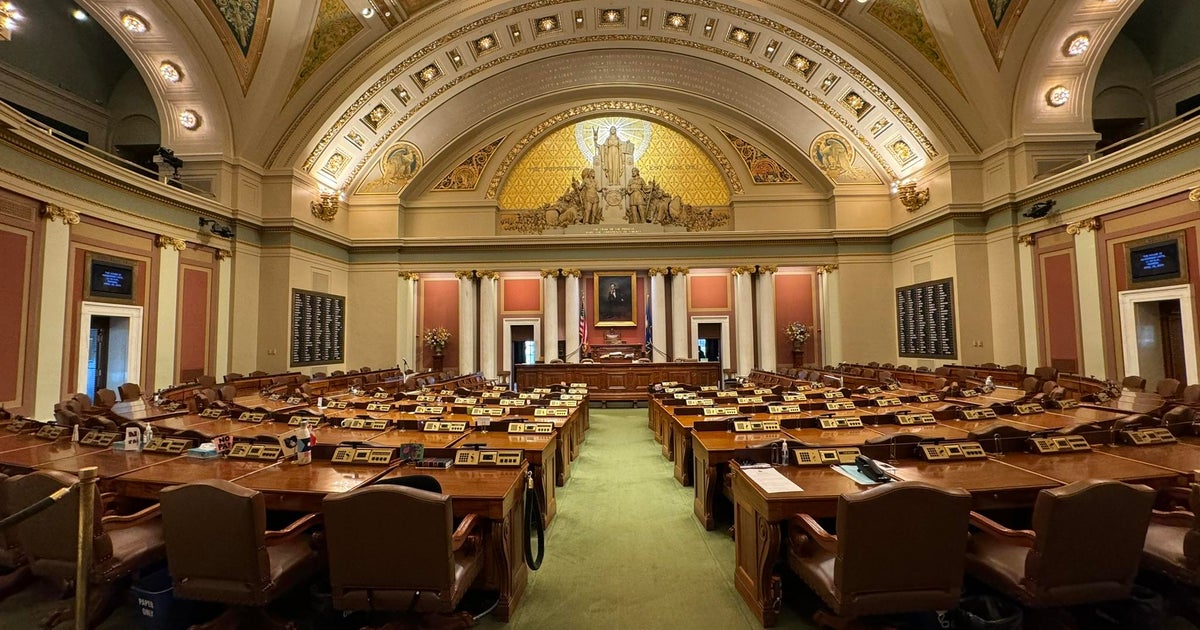New Redistricting Maps Reshape Legislative, Congressional Boundaries
MINNEAPOLIS (WCCO) -- New legislative and congressional district maps out released Tuesday by a special court panel will shape politics in Minnesota for the next decade.
The process is called redistricting, which happens every 10 years based on new U.S. Census population data to ensure equal representation. It can impact who represents your interests in Congress and in the state legislature.
The 2nd Congressional District, the most competitive race in Minnesota in 2020, saw the most significant change in its boundaries, shifting away from Goodhue and Wabasha counties and gaining Le Sueur County in the southeast-metro district.
But on Tuesday, DFL Rep. Angie Craig announced her re-election bid, facing a re-match against GOP challenger Tyler Kistner.
"While I am, of course, disappointed that the new boundaries do not include all of the cities and towns that I currently represent in Congress, I look forward to being the voice of several new communities across Minnesota," she said.
Craig lost Goodhue by 14 points and Wabasha by 24 points; Voters in Le Sueur county, which was previously included in the 1st District, supported Republican Rep. Jim Hagedorn by 21 points two years ago, according to data from the Minnesota Secretary of State's Office.
Kistner also reaffirmed his campaign to unseat Craig on Tuesday.
"One thing this clear, Angie Craig's days in Congress are numbered," he said.
Of the state's eight congressional districts, rural, less-populated districts in Greater Minnesota had to expand their geographic boundaries, while more urban and suburban districts with more people had to shrink in size.
The five districts centered in the 11-county metropolitan area grew at a higher rate than the statewide average, the court said. It added that it couldn't draw entirely new congressional districts, but change existing boundaries in a "politically neutral way" to ensure they meet Constitutional demands of equal representation.
The state legislature has the power over the redistricting process, but the courts have intervened since 1980 for congressional maps and 1950 for legislative districts.
New Maps Put All Of Legislature On The Ballot This Fall
The new maps change the political playing field, impacting power not just in Congress, but in the state legislature. Every state legislator is up for re-election because of redistricting this fall, which means control over the state capitol is at stake.
If Minnesota's divided legislature shifts to total control by one party, the political dynamic changes dramatically.
Legislative leaders had just begun looking through the maps and studying what new maps mean for their members as of Tuesday afternoon.
"We have not looked at that, as far as the maps go, but we're confident that our priorities this session will help us grow and maintain our majority," said Senate Majority Leader Jeremy Miller. "Overall, initial analysis—these maps seem to be fair."
In a statement, DFL House Speaker Melissa Hortman said her caucus was just starting to process the information.
The new maps will have some incumbents doubled up in the same district. Sen. Mark Johnson, the Senate Redistricting Committee chair, told MinnPost he estimated at least seven of those two-incumbent districts in the chamber.
Click below for more information on the 2022 congressional maps (all in .PDF form):




